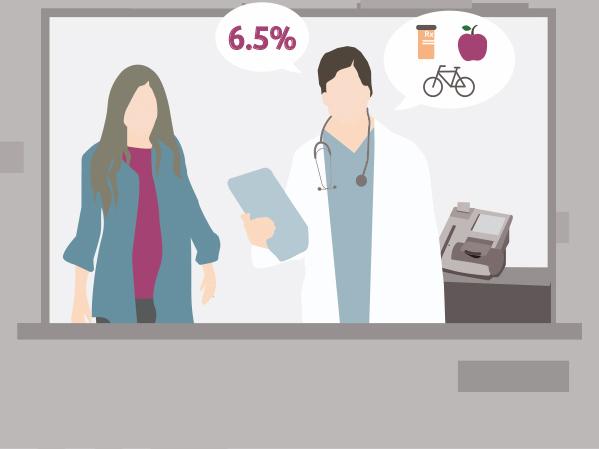
What is HbA1c (A1c)?
Hemoglobin (Hb) is a protein found inside red blood cells that carries oxygen from the lungs to the rest of the body. Glucose in the blood can bond with hemoglobin to form glycated hemoglobin, or HbA1c. If there is excess glucose in the blood, the level of HbA1c will be higher.
HbA1c is usually measured either as a percent (%) of the total hemoglobin level or in mmol/mol.1

Why should you get your HbA1c tested?
Diabetic patients should have their HbA1c tested to monitor the progress and effectiveness of their treatment plan.
In diabetes, blood glucose levels can change rapidly within minutes. If a doctor tests only for blood glucose, they may not get an accurate picture of how well your diabetes is in control.
By measuring HbA1c, doctors can gauge your average blood sugar levels from the last 2-3 months and thereby provide a more tailored treatment plan. HbA1c measurement can also show whether treatment plans and lifestyle choices have been effective.1

What is the target HbA1c level?
Doctors usually advise their adult patients with diabetes to target an HbA1c level of <7.0%, but the target may be higher or lower based on a patient’s medical history.2
Who should be tested?
Diabetic patients should have their HbA1c tested to monitor the progress and effectiveness of their treatment plan.
In some countries, HbA1c tests can also be used to screen patients to determine if they are diabetic or pre-diabetic. Patients with prediabetes are at risk for developing diabetes and include patients with any of the following risk factors:
- Family history of diabetes
- Overweight
- Unhealthy diet
- High blood pressure
- Older age
By diagnosing the disease early, more-effective treatment can be administered.
What do the different HbA1c results/ranges mean?
How often should you get tested?

Diabetes patients should get tested between 2 and 4 times per year to make sure their diabetes is under control.3
Where can you get tested?

Ask your doctor about getting an HbA1c test done in the office during your next visit.